Jenny Eden: ‘Opening up the Receptors’
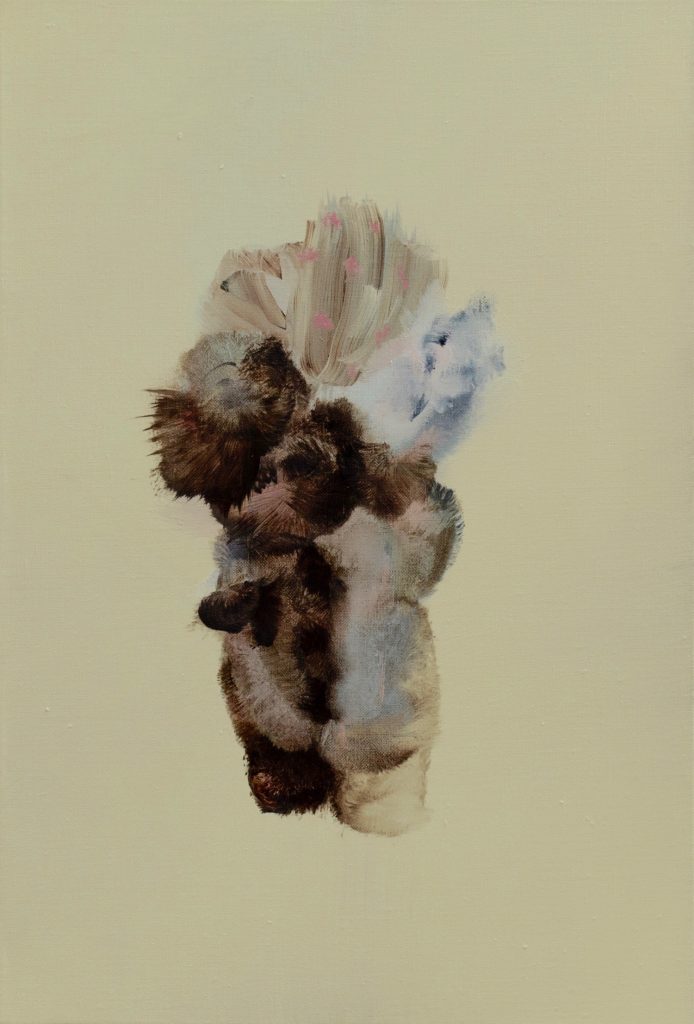
Mute Being
A stretcher is made using four sections of 2” x 1” or 3” x 1” timber (measured according to the intended size), cut at 45 degrees and assembled with heavy duty staples. Canvas (or in my case, calico) is stretched and attached, primed with two coats of rabbit skin glue and propped up to dry. I have a being with me, raw and mute, waiting in the wings.
When the time is right, this mute being is moved to the wall. However paint goes down, in the joining of two beings, and in the imprint from one to the other, agency is activated and a conversation ensues.
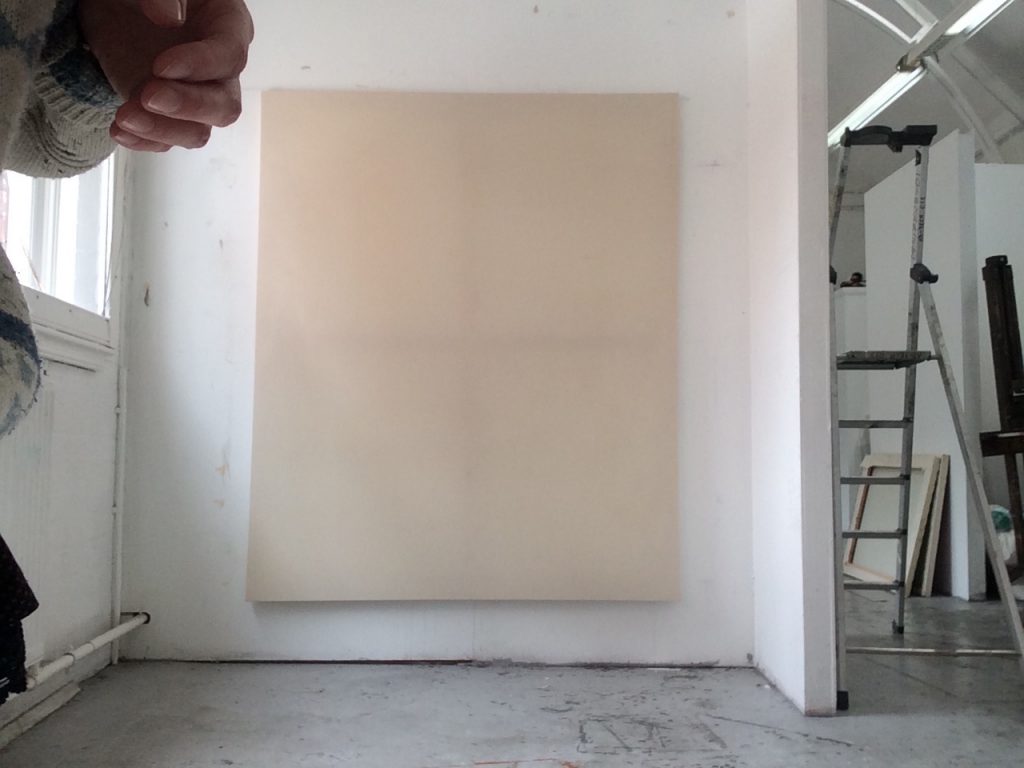
About agency
To understand how agency is at work in painting, Art Critic and Historian Isabelle Graw examines G. W. E. Hegel’s writing on painting from the second volume of his lectures on aesthetics. Here, Hegel discusses painting’s subjectivity and its ability to reflect our unique characteristics and relationship to being in the world: ‘in paintings we see what is effective and active in ourselves’ 1Hegel, G.W.F. (1975), Aesthetics. Lectures on Fine Art, Vol.2, trans. T. M. Knox (1835). Oxford: Clarendon Press, p797. Thus, imbued with the power of the maker, paintings attract attention and perform a ‘subject-like’ role, like a quasi-person. Indeed, ‘this is why painting can be potentially experienced as being intriguing in the way that only an intriguing person could be’ 2Graw, I. (2012) ‘The Value of Painting: Notes on Unspecificity, Indexicality, and Highly Valuable Quasi-Persons’ in Graw, I. Birnbaum, D and Hirsch, N. (eds.) Thinking Through Painting; Reflexivity and Agency beyond the Canvas. Berlin-New York: Sternberg Press, p52.
Graw recognises an awareness of painting’s ‘capacity for subjectivity’ as the foundation for its (now) common position as a discipline that can think for itself. She proposes that contemporary painting is a highly personalised production of signs, that creates subjects, not objects, with the power to think independently. She aligns this proposal with painting’s resurgence since the millennium, with a greater interest in the economic and social value production of painting, and with the growing need to witness the index of the artist’s hand as sign of labour and presence 3(ibid).
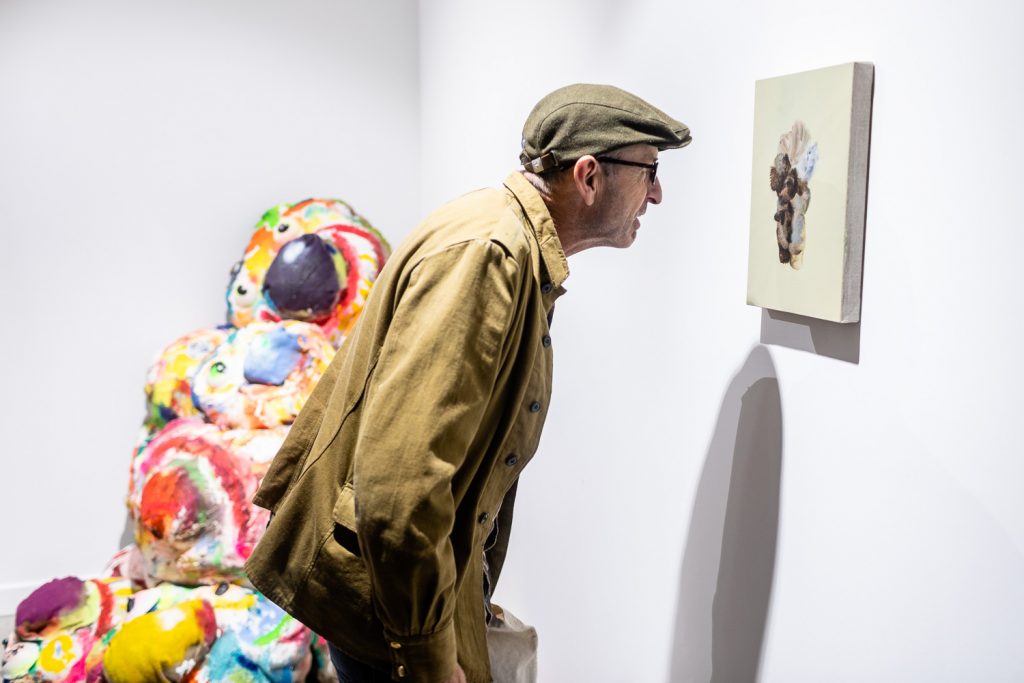
Graw’s investigation into both the agency of painting and the reasons for its associated popularity and intellectualisation, is therefore connected to developments in the medium over recent decades. She is not concerned with the ‘subject-like’ power within a painting itself, or the thinking potential of paint matter on a surface, and yet her endorsement of Hegel’s attempt to give subject-power to painting, and her emphasis on painting’s indexicality, both imply an ontological relationship between a single painting and a single viewer (or painter). Consequently, I believe there is potential to extend the discussion of painting’s subjectivity to include a new perspective on how we, as human beings, relate to the power within non-human things in the world (such as paintings). This leads us towards a new consideration of material, and of the potential and momentum within matter itself 4Witzgall, S. (2017) ‘Power of Material / Politics of Materiality – an Introduction’ in Witzgall, S. and Stakemeier, K. (eds.) Power of Material/Politics of Materiality, Diaphanes, pp13-26.. I will now examine this new perspective, known as New Materialism, in relation to its importance for painting and the trajectory of my own practice.
New Materialism
In New Materialist discourse, Jane Bennett suggests we take ourselves away from the centre of the ontological discussion to consider the power of non-human matter as a catalyst for movement and impact. 5Bennett, J. (2010) Vibrant Matter: a political ecology of things. Durham, N.C.: Duke University Press.Adding to Western philosophical history, which already views matter (or things) as lively and vibrant, Bennett goes further, examining the capacity, or ‘vitality’, of things and the ‘call’ of ‘thing-power’. She asks, what happens to our bodies and practices when this call is taken more seriously?
I hope to present a picture of what happens in my mind, my body and my practice as a result of responding to the ‘call’ of a painting, where thing-power exists as paint matter, the painted thing and the painting body, collectively known as the ‘paint-thing’ (my term). In a process where Subject and Object are interchangeable, I will unpick what I mean by ‘a painting looking back at me as much as I look at it’ – where it has the same capacity to speak, call, communicate and hide information about itself as I do.
Heidegger and ‘Unconcealment’
To consider how vitality is generated in my painting practice, I need to refer to Martin Heidegger’s writing on ‘unconcealment’ from his paper ‘The Origin of the Work of Art’.6Heidegger, M. (2002) Off the Beaten Track (including The Origin of the Work of Art from 1950). Cambridge: Cambridge University Press.Within an exploration of painting’s ‘thing-characteristics’, Heidegger proposes ‘unconcealment’ as a form of active withholding and revealing. We find this in his writing on Van Gogh’s numerous paintings of peasant boots, where pictorial references to the owner, location and purpose of use were not shown in the picture, but revealed through the painted articulation of the boots themselves.
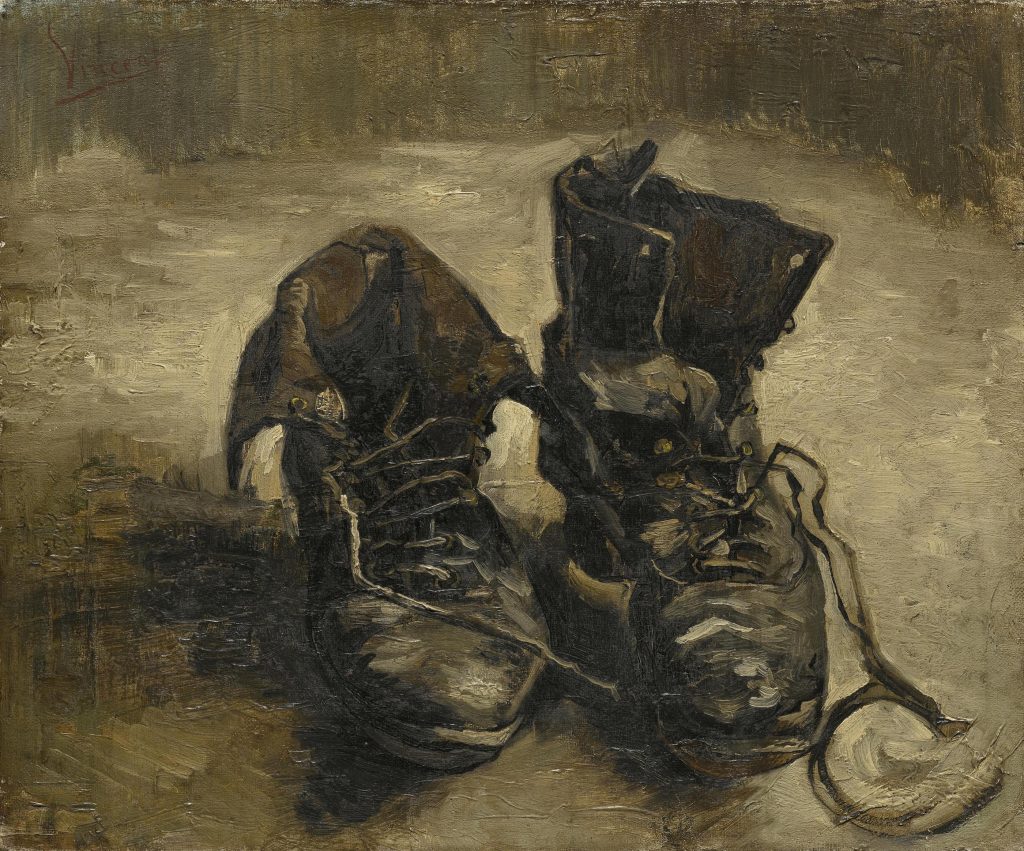
The word ‘unconcealment’ describes the state resulting from an action that is not being done, but it holds the name of the action that is not being done within it. As Heidegger intimates, the pictorial quality of the painted thing is both concealing information and attempting to reveal something of itself. In its willingness to be seen, the painting opens its receptors and makes itself visible. But in doing so, it also withholds and controls, drawing a veil over itself. Two conditions, therefore, are simultaneously present. The painting, neither explicit nor naked, neither secret nor buried, maintains, through ‘unconcealment’, the integrity of an object of being, as one might say a human being does.
So, just as I cannot fully grasp another human being, because they have their own mind which I know even less than my own, I cannot fully read a painting because it, too, has its own mind. This is not defeatist; quite the opposite. The fluctuation achieved through opening out and keeping in – in my mind and in the space between looking and the painting’s surface – is exactly what makes a painting function well. The see-saw effect that the painting produces through its ‘unconcealment’ is the ‘unconcealment’ I experience in looking. Indeed, my best paintings happen when I can cultivate this sought-after and slippery state and thereby contain, psychologically, the painting’s movement.
So far, however, I have largely spoken within something of a conscious framework. I would now like to explore the wider unconscious processes I have only intimated up to now. For instance, if we take the ‘paint-thing’ as an object of vibrant matter, capable of framing its individual characteristics, then we could suppose that I (the painter) might relate to it as I do to any other being.
Foregrounding my position as painter within this relationship, since I cannot speak for the painting and only speculate on its behalf, I want to start this final inquiry from a Psychoanalytic position before considering knowledge and experience in relation to wider Philosophy.
Psychoanalysis and Other Motivations
Richard Wollheim7British Philosopher on Art and Psychoanalysis says paintings are intrinsically connected to the unconscious (Herwitz, 1991), the place in one’s psyche where early life experiences form an intricate pattern by which we function through later life. Like Sigmund Freud, he posits this place as inaccessible to consciousness, though it drives thinking and behaviour.
That my artistic intention should be motivated by factors deep within my psyche fascinates me. I do not deny this to be the case. But I do not desire to know the content of my unconscious intention, since I am not doing Art Psychotherapy or Psychoanalysis on myself. What intrigues me is that unconscious intention is present in art making, just as it is in life itself. It permeates through all other states, though information pertaining to it is – more or less – unknown through the course of everyday life, other than in the drives one gets from it.
Within the activity of my practice I am most certainly aware of other motivations for my artistic intention, motivations diverse in influence, not exclusive to early psychological development, moving across different levels of consciousness. I agree with Daniel Herwitz8Writer on Art and Aesthetics that Wollheim’s predominantly Psychoanalytic position is viable, but also limiting, in the light of other possible historical, social or cultural contexts. Indeed, reasons for doing the work could come from more conscious past, recent or contemporary experiences within the painter’s world.
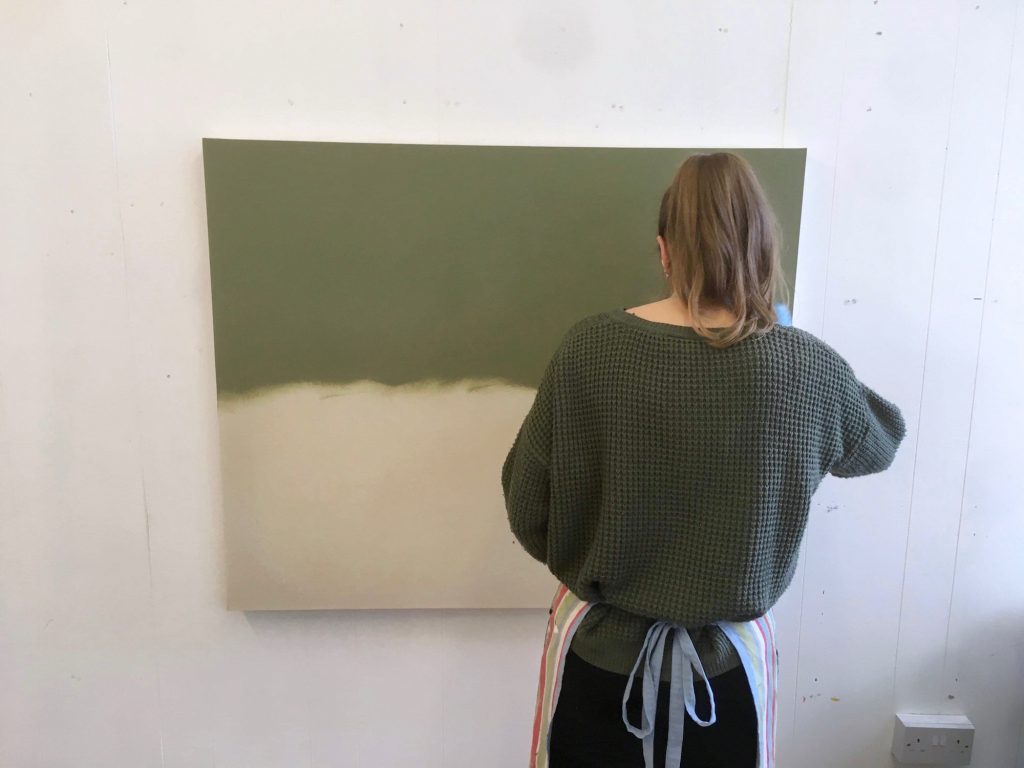
My First Intentions
A first intention for a painting arises from aspects of the aforementioned contexts, resting at different levels of consciousness. It exists at the start as a kind of sense aura, reminiscent of Walter Benjamin’s experiential descriptions of objects and environments in his writing on the work of art.9Benjamin, W. (2008) The Work of Art in the Age of Mechanical Reproduction (1935), London: Penguin. Sitting in the mind, this feeling is made up of hope, experience, and remembered colours and marks; and the painting is started when I feel the urgent need to reproduce this aura on the surface.
I certainly have the practical knowledge to begin articulating this intention, but I cannot fully control the way the paint goes down or what happens on the surface. This is determined by a combination of the ‘paint-thing’s own agenda (it is an object of vibrant matter) and my shifting intention for the painting, modified at each stage by surface happenings and my experiential associations.
Experience
Associations I bring to the activity of painting are all life experiences, of one kind or another, at one level of consciousness or another, and to some degree all in the past. Gilles Deleuze says the past survives in itself until it is needed. ‘The past […] has not ceased to be, it has only ceased to be useful’.10Deleuze, G. (2004) Desert Islands and Other Texts (1953-1974). Los Angeles, New York: Semiotext(e), p29. Affiliating it with the unconscious, Deleuze also thinks of the past as virtual, which for him means it is real, an imagined real as opposed to an actual real. Thus, we can understand how the past might co-exist in the present, with the present, though information in it may rest in the unconscious (also present).
In painting, I can only bring my own past, my own experience to looking (at work-inprogress or finished work); I cannot bring anything from outside this experience, because I do not know it. But just as I cannot always determine what happens on the surface of the painting, I cannot control what the ‘paint-thing’ activates in my personal experience. Clearly, I am not painting from my entire life experience all at once; small aspects of it are probed by what the painting is doing.
But what do I mean by ‘experience’ and ‘past’, in the context of my practice? I am largely referring to material or sense characteristics of things and spaces, places and times, and the empirical knowledge taught through time spent with, and exposure to, things in the world.

Knowledge
Empirical, or ‘a posteriori’ knowledge about how to paint is also generated from the experience of doing painting – for example, brush handling or the understanding of colour interaction. This knowledge is supported by other activities such as looking at other people’s paintings, reading about painting (as well as philosophy and art theory), and writing essays on painting, like this one. But in this largely isolated, repetitive and time-disciplined practice, perhaps experience and proficiency could come closer to a purer form of knowledge than the empirical kind. Using Immanuel Kant’s own description of a pure knowledge – synthetic, ‘a priori’ knowledge – that relies on something else (the predicate) coming together with the body (the concept), it could be argued that aspects of the painting process move from ‘a posteriori’ to ‘a priori’ and, therefore, are intuitive.11Kant, I. (ed. 1997) The Critique of Pure Reason (1781). Cambridge: Cambridge University Press.
Levels of consciousness in painting
Now we have understood that intention, knowledge and experience could be at work in the painting process and held in the mind, let us finally consider how the mind manages these things.
Alongside the unconscious, three other mental states (or levels of consciousness) have arisen in my thinking about what happens in my studio; consciousness (like the unconscious, a given, understood here within the context of Phenomenology), the pre-conscious (one of Freud’s early discoveries in Psychoanalysis) and the ‘Unthought Known’ (a concept developed by contemporary Psychoanalyst Christopher Bollas).
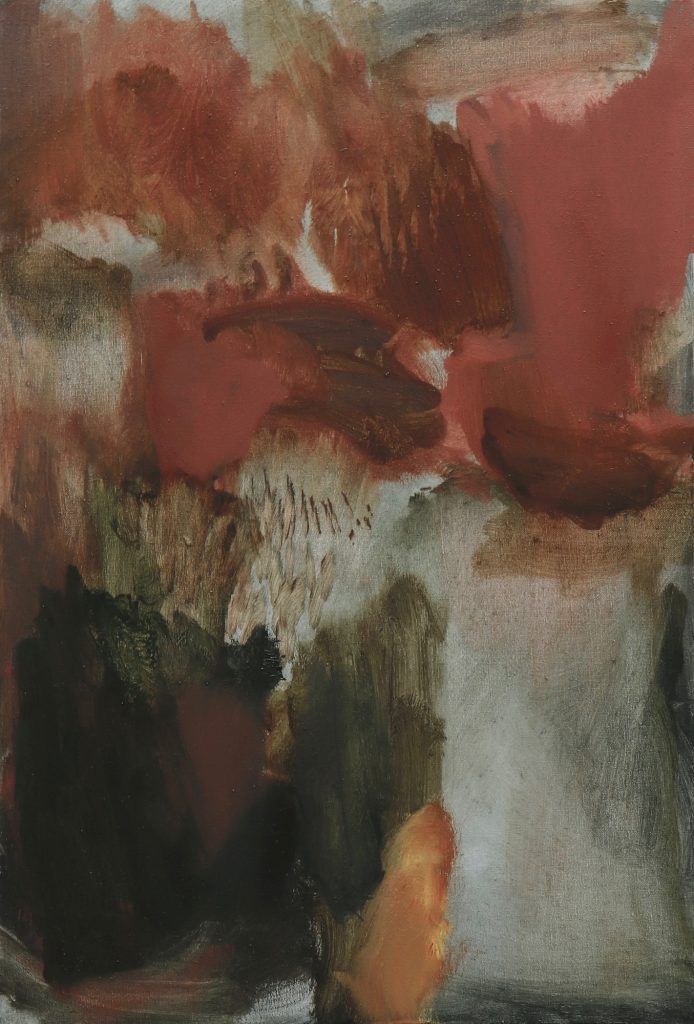
What I see – what is looking back at me – I understand as a conscious reading of a painting. The painting may require me to look away and look back, leave the room for a hour, a day or a week – indeed, I may need to desensitise myself to it – but when I return I still deal with what is present in the painting in the moment of looking. And the painting is always there, waiting for my return.
But this is not full proof. My reading may have been too quick. A piece of ‘fake news’ could be disguising something more fundamental in the painting. Or it may be just too difficult to read. In these cases, it is necessary to get through the painting’s ‘stray associations’ 12Wollheim, R in Herwitz, D. (1991) The Work of Art as a Psychoanalytic Object: Wollheim on Manet. The Journal of Aesthetics and Art Criticism, Vol. 49, No. 2 (Spring, 1991), p141. The pre-conscious – the accessing of information below the level of consciousness – gives me a clue as to how to move forward. My methodology for directing this process is writing, which I do almost as often as I paint.
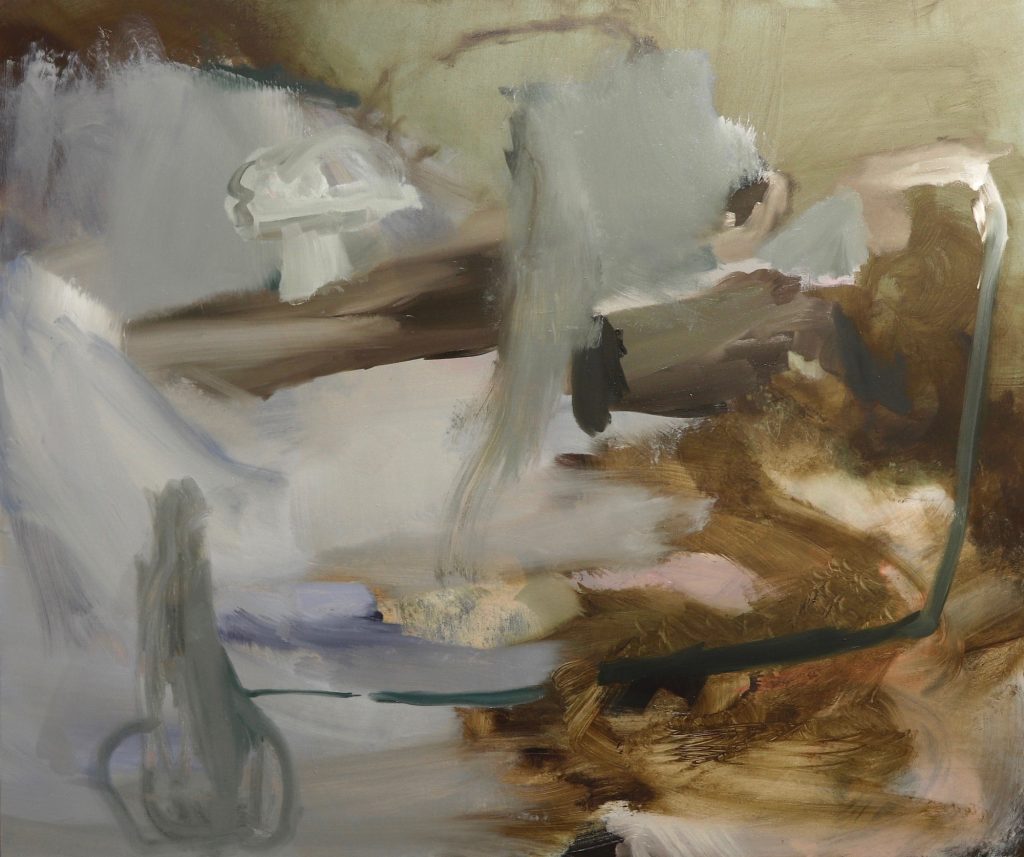
Just as the present imagines the past within itself, it also imagines a future for the painting. In this way, the painting body and my physical body are present, but there is a reverberation between past and future crossing over the present in my mind, and this could be the case for the painting too. I do not rule out the possibility that the painting is finding itself, having disturbed its own willingness to be seen. The third mental state I interpret in terms of Bollas’ ‘Unthought Known’; as information that is somehow known, but not yet thought. I sometimes have a deep feeling about a painting’s ‘being-characteristics’, but I cannot think it properly or articulate this knowledge. In these instances I am forced to be with the painting, and lock into the process in preparation for a challenge or game, or for the slow reveal, or for the opportunity to finally crack the code. This thinking has led me to consider whether the painting has its own ‘unthought known’, since it seemed to know what it wanted all along.
Found photograph of girl opening presents, circa 1980. Photo: Unknown
Bennett, J. (2010) Vibrant Matter: a political ecology of things. Durham, N.C.: Duke University Press.
Benjamin, W. (2008) The Work of Art in the Age of Mechanical Reproduction (1935). London: Penguin.
Bollas, C. (2011) The Christopher Bollas Reader. London, New York: Routledge.
Deleuze, G. (2004) Desert Islands and Other Texts (1953-1974). Los Angeles, New York: Semiotext(e).
Graw, I. (2012) ‘The Value of Painting: Notes on Unspecificity, Indexicality, and Highly Valuable Quasi-Persons’ in Graw, I. Birnbaum, D and Hirsch, N. (eds.) Thinking Through Painting; Reflexivity and Agency beyond the Canvas. Berlin-New York: Sternberg Press.
Hegel, G.W.F. (1975), Aesthetics. Lectures on Fine Art, Vol.2, trans. T. M. Knox (1835). Oxford: Clarendon Press.
Heidegger, M. (2002) Off the Beaten Track (including The Origin of the Work of Art from 1950). Cambridge: Cambridge University Press.
Herwitz, D. (1991) The Work of Art as a Psychoanalytic Object: Wollheim on Manet. The Journal of Aesthetics and Art Criticism, Vol. 49, No. 2 (Spring, 1991), pp137-153.
Kant, I. (ed. 1997) The Critique of Pure Reason (1781). Cambridge: Cambridge University Press.
Witzgall, S. (2017) ‘Power of Material / Politics of Materiality – an Introduction’ in Witzgall, S. and Stakemeier, K. (eds.) Power of Material/Politics of Materiality, Diaphanes, pp13-26.